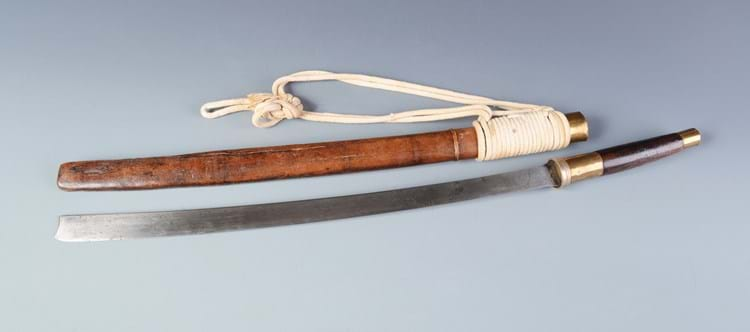
The mid-20th century Burmese weapon estimated at £200-300 at David Lay on June 29-30 was brought back from Burma after the end of the Second World War.
It belonged to Jack Chalker, war artist, former principal of Falmouth College of art - and survivor of the infamous ‘Death Railway’.
Mimi Connell from the Penzance saleroom says: “Anyone who has watched the films Bridge over the River Kwai or The Railway Man, or read anything describing the treatment of POWs in Burma at the hands of their Japanese captors, will know just how savage and brutal that experience was and how extraordinary was the courage and spirit of those POWs.”
More than 12,000 Allied prisoners died during its construction, along with at least 90,000 Asian labourers.
Chalker was captured in 1942, just a month after arriving in Singapore, and throughout his captivity - despite great personal risk to himself - sought to record daily life in the camps in pen and ink. The making of any records was strictly forbidden and infringement of the rules resulted in savage punishment. Everything was kept hidden, in bamboo poles, even an artificial leg.
After his release Chalker joined the Australian Army HQ as a war artist assisting Australian hero Sir Edward ‘Weary’ Dunlop, a surgeon who he had worked with in the camps. Some of Chalker’s artwork was used in evidence during the Tokyo War Crimes Tribunal.
He returned home and resumed his studies but he was unable to look at his paintings for over 40 years. Eventually his extraordinary and harrowing pictures were published in two books and featured in a BBC documentary about the Burma railway.
When ill health forced the sale of over a hundred POW paintings in April 2002, they made more than £200,000 at a Bonhams auction, many bought by private collectors and museums, among them Britain’s National Army Museum.
Record of brutality
When Chalker died in 2014, aged 96, an obituary in The Telegraph said his sketches and watercolours, along with the works of his fellow POW artists, Philip Meninsky, Ashley George Old and Ronald Searle, “now form a valuable record of the brutality experienced by the men who were made to work for the Japanese forces, sometimes for up to 16 hours a day”.
It added: “On his capture, Chalker hid a few watercolour paints and pencils in a secret compartment in his haversack. For canvases, he stole paper from his captors and used the pre-printed postcards that prisoners were given to send home.”





